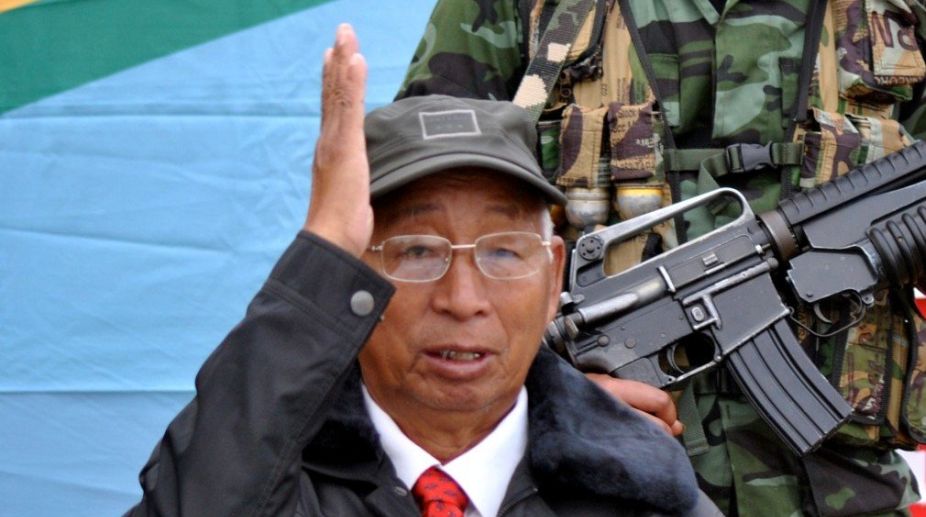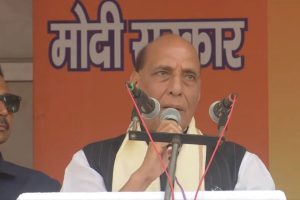It was late autumn in 1997 when I landed at Bangkok airport on a Thai International flight from Kolkata. The choice for me was either Singapore or Bangkok and I chose the Thai capital because I had friends there to whom I could approach should anything go wrong.
The mission was to meet the elusive and media-shy chairman of one faction of the National Socialist Council of Nagaland, Shanu Shangyang Khaplang and RK Meghen, aka Sanayaima, then chairman of the United National Liberation Front of Manipur.
Autumn is the Geneva season in local parlance for that is the time when the elusive leaders of the underground movements in the North-east make their presence felt at the UN headquarters in Geneva.
The duo were returning from their European sojourn and had agreed to meet me halfway before they went back to their bases in the jungles of what is now called Western South-east Asia or, put simply, the Indo-Myanmar region, which has been in continuous turmoil for nearly 70 years now. It was Captain Allission aka Thanil Luwang of the UNLF who received me at the airport.
He was wearing horn-rimmed specs, navy blue pants, a sky blue shirt and a mobile hung on his hip. He resembled a Singapore stock-broker more than a guerrilla fighter.
The last time I saw him, it was near Imphal — he had an M-16 rifle slung across his shoulder and the mobile was replaced by a Chinese grenade. Speaking in fluent Thai, he directed the cab driver to our destination. It was a long drive to the Thai-Laos border at a place called Nongkhai where we landed up in a nondescript hotel.
Then Allison spoke on the mobile again and said, “Sir our guest has arrived”. Then the two of the most powerful men in our region came in very quietly and we looked at each other for a minute or so.
I had known Yambung (Manipuri for respected elder brother) Meghen since 1975 and we shook hands and he introduced me to the other person saying, “This is SS Khaplang”.
I had carried two Meitei khudies (lungi-like wraparounds) for Yambung and a Meitei Lashingphi (a Manipuri blanket with cotton wool inlays) for Khaplang.
Earlier I had thought of taking a Leirum phi, a Manipuri shawl with Tangkhul motifs but considering the then prevailing animosity with Muivah of the (I-M) faction of the NSCN, decided against it lest he feel offended.
We sat and discussed about the affairs of insurgency, happenings in Manipur and Nagaland, for two whole days before the actual interview began. And my first question to him would perhaps shed a lot of light on the ongoing talks between the NSCN (I-M) and the Government of India and the Framework Agreement that was signed on 3 August 2015. The question was “Why did you split with Muivah and Isak Swu in 1988?”
His answer was, “The main cause is that Muivah had summoned an emergency meeting of the Naga National Assembly at Hangshen in the Pangmei region of Eastern Nagaland and although that meeting did not have the requisite quorum, ‘One step up from Suisa plan and one step down from Naga sovereignty’ and it was for that he was expelled from the party. Isak was away in Kachinland.”
Then on the question of military operations, which the (I-M) group seems to be having an upper hand in terms of ambushes and attacks on the Indian Army and security forces, he confirmed that the attack on the Army in which the Commanding Officer and other ranks of an Indian Army regiment were killed at Mokokchung in 1994 and the Zunhebuto and Umathel incidents later in Nagaland and Manipur, were carried out by his group.
The latest trademark of his military exploits was carried out in Manipur’s Chandel district on 4 June 2015 in which 18 Army soldiers including a JCO belonging to the 6 Dogra Regiment were killed.
But military exploits apart, where Khaplang differed from Phizo under whom he had served in the early days and Isak Swu, with whom he was associated later on, was his vision of a collective struggle of the various forces operating in the region. In 1990, he was chairman of the Indo-Burma Revolutionary Front, comprising the NSCN, UNLF and the ULFA and other revolutionary groups of the region.
Then after he unilaterally abrogated the 14-year-old ceasefire agreement with the Centre in March 2015, he was instrumental in forming the United Liberation Front of Western South East Asia with a similar objective of collectively fighting the “Indian colonial forces”.
Khaplang was also a very tactical man and when the Isak-Muivah faction of the NSCN was trying to eliminate then Nagaland chief minister SC Jamir (now Odisha governor), he leaned in favour of Jamir and the later gratefully acknowledged his help.
So much so that it is believed that Jamir had lent 60 AK-47 Rifles from the Chumukedima armoury of the Nagaland Police to help him escape an Army dragnet. It is also believed that Jamir, the shrewd politician that he is, convinced Lt-General NS Malik, then GOC of the Army’s 3-Corps ted at Ranghapahar near Dimapur, to lift the dragnet and allow Khaplang’s men to slip through, promising him a gubernatorial post upon retirement from the Army. That done Khaplang was back in his happy hunting grounds in Myanmar.
When I asked him about the 60 AK-47 Rifles, he replied in a-matterof-fact way, “Oh! We have returned those”. During the one week I was closeted with him, he never had a bad word to say about his arch rival and foe Th Muivah who had been spewing venom on him through the media, calling him an “Indian agent” and what not and all that he said about him was that “we were together once but are now separated but one day maybe we will come back together again.”
On charges of being dubbed a hawk towards India’s peace parleys with the Nagas, he said that he has been against it as Naga unity must precede any talks for peace and for which following the Conference at Atlanta in 1997, they had offered a ceasefire with the Isak-Muivah faction.
In his twilight years Khaplang abrogated the ceasefire agreement with India but had a de-facto agreement along the same lines with Myanmar’s government. The latter, not wishing to hurt the sentiments of the Indian authorities, has not made it de jure though.
On the very vital question of the Meiteis’ fear of Manipur breaking up as a Naga appeasement policy by the Government of India, Khaplang was very categorical and firm in the view that the question of greater Nagaland was a ploy of the Government of India and its RAW, aimed at playing one group of people against another and that the question of a greater Nagaland under the Indian administration stands condemned by him. Khaplang was born 80 years ago and belonged to the Hemi or Pangmei Naga tribe of Myanmar located around the Hukwang Valley.
He began his revolutionary march first by organising the Naga Defence Force and then the Eastern Naga Revolutionary Council before joining ranks with Angami Zapu Phizo’s Naga National Council. And when the fissures appeared in the Naga movement over interpretation of the 1975 Shillong Peace accord — signed with the Indira Gandhi government with moderate Naga leaders — he closed ranks with the National Socialist Council of Nagaland with Isak Chisi Swu as its chairman.
Th Muivah was the general secretary with himself assuming the role of vice-chairman. And when the NSCN split in 1988, he formed the NSCN (Khaplang) with himself as chairman, a position he retained till his death on 9 June 2017, at his headquarters in Myanmar.
Messages of condolence came from many quarters, including Muivah. This revolutionary patriarch affectionately called “Baba” by members of all revolutionary groups that came in contact with him or sought assistance, will be missed by those who believe in the armed struggle of the region. But as a person who was privileged to be the first journalist to have interviewed him, all that I can say is that he was a “revolutionary and a gentleman”.
The writer is the Imphal-based special representative of The Statesman.











